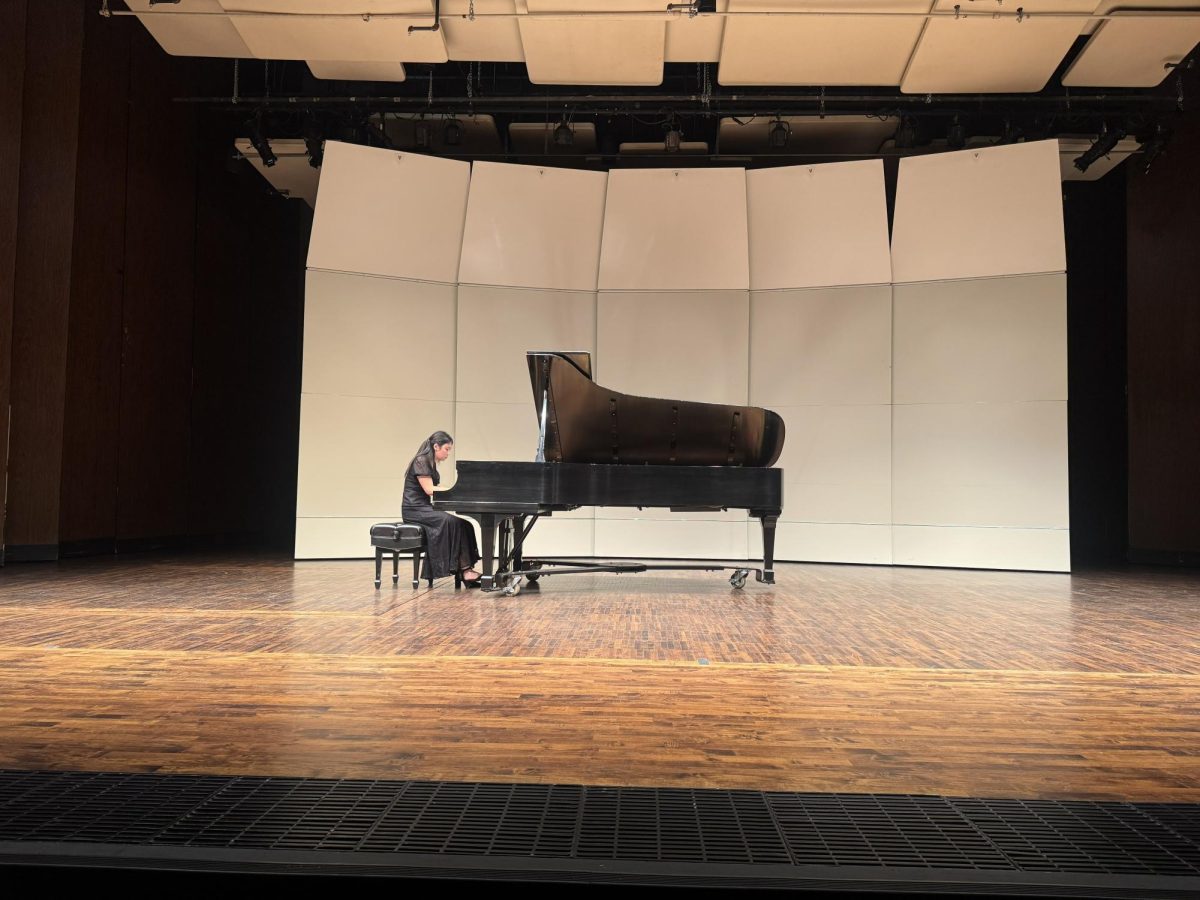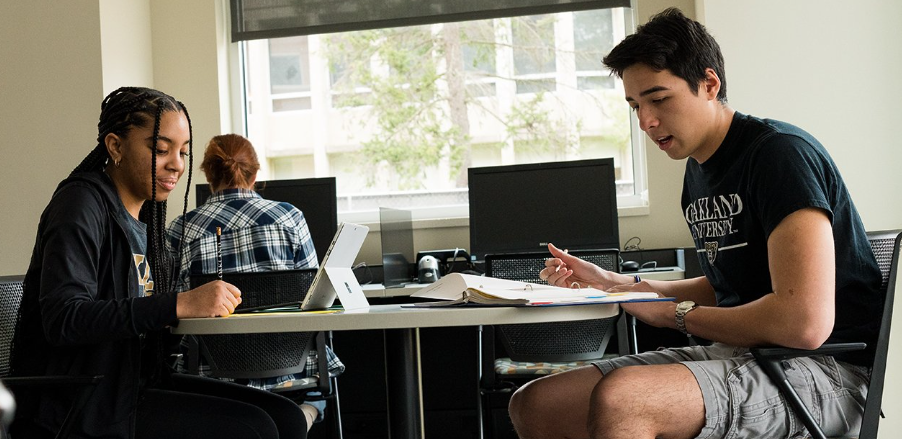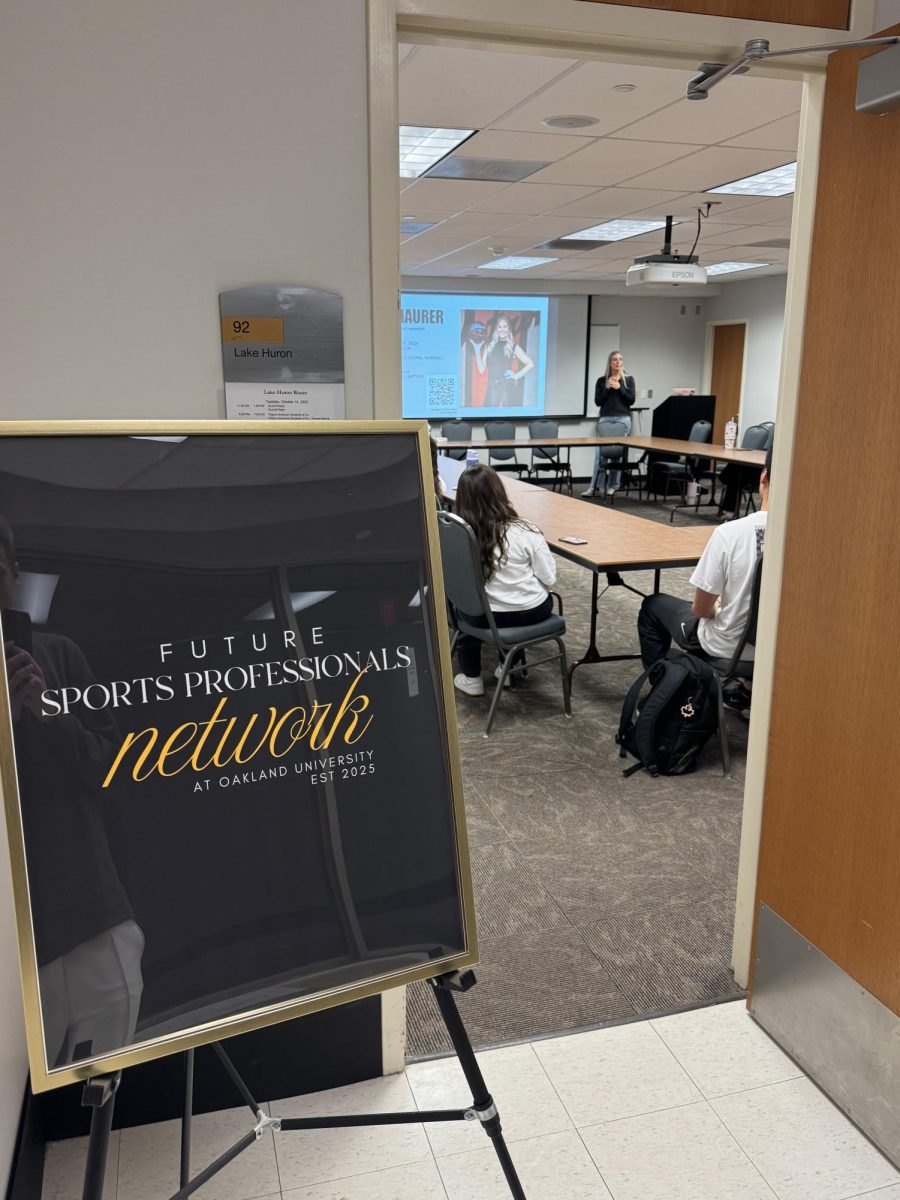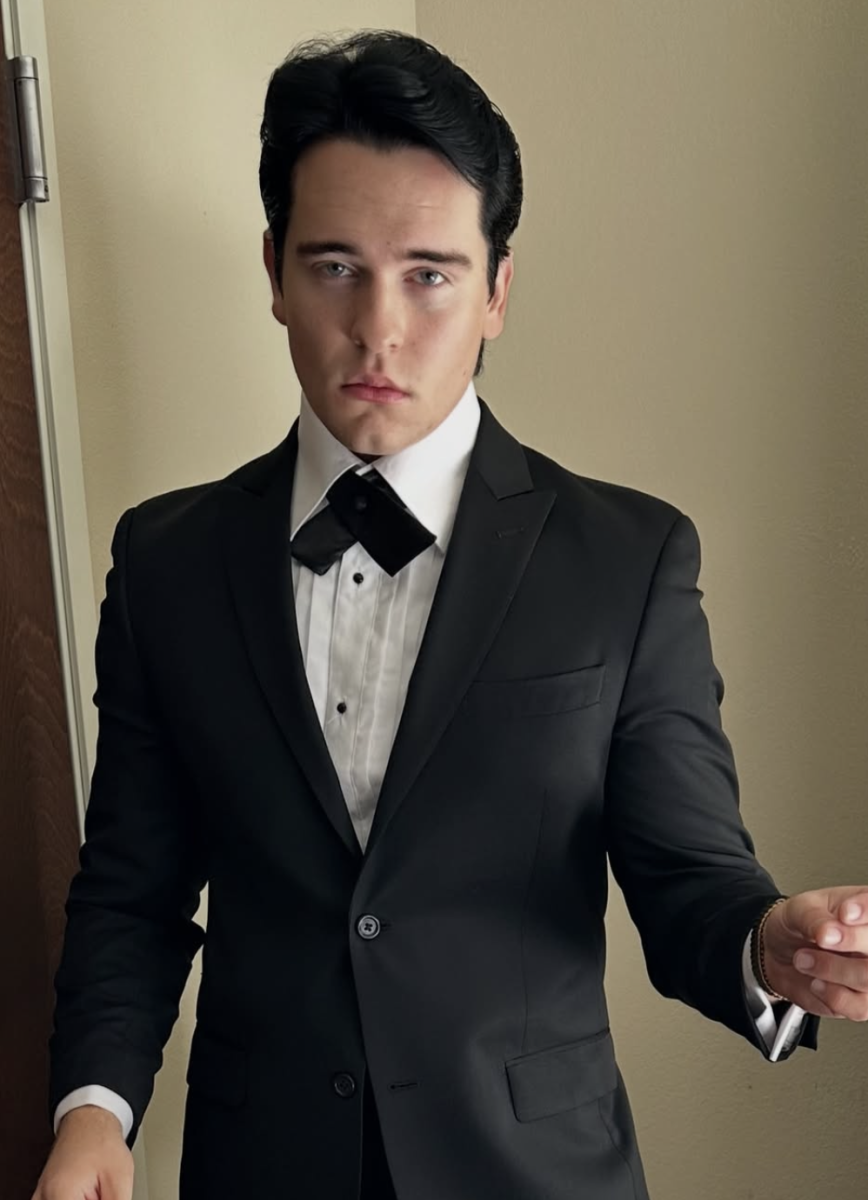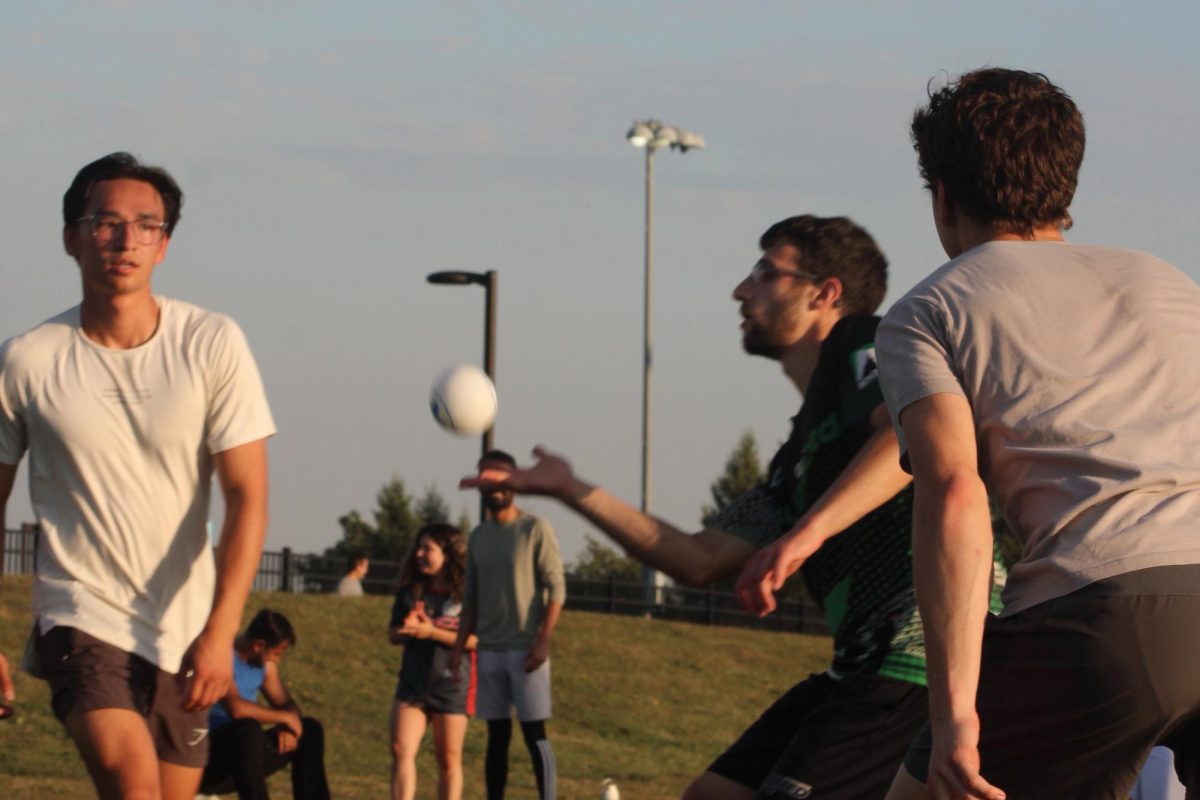On Wednesday, Oct. 15, Oakland University affiliates and members of the local community gathered to hear artist Matthew Craven discuss his creative journey during a talk at the Oakland University Art Gallery. The event was held in conjunction with the exhibition “System and Sequence: Pattern and Ornament in Contemporary Art,” now on view at OUAG.
Originally from Dunton, Michigan, Craven shared his path from attending a high school without art classes to becoming an internationally recognized artist. Growing up in a rural town, he had little access to art education and originally planned to become an elementary school teacher, following in his mother’s footsteps. That plan changed when he went to college.
“I met people who were just as obsessed with making things as I was,” he said. “That sense of community pushed me to take art way more seriously.”
After earning his Bachelor of Fine Arts degree, Craven moved to Detroit, working as a fine art technician while holding side jobs and building connections that shaped his early career.
“Detroit taught me how to be an artist, not just an art student,” he said.
Craven later moved to New York City to pursue his Master of Fine Arts degree at the School of Visual Arts. There, he began experimenting with collage, blending historical works with modern patterns to develop his own signature style. His work has since been exhibited in galleries across the United States and internationally, from San Francisco to Dubai.
Despite his success, Craven remains grounded in the values that shaped his early career: community, adaptability and persistence. He encouraged students to practice consistently, embrace experimentation and stay open to change.
“You can’t fake practice,” he said. “The more you make, the more you learn who you are as an artist.”
Craven also spoke about how one’s environment influences creativity. Each move – from Michigan to New York to California and back – shifted his perspective and artistic approach.
“Where you are always finds its way into what you make,” he said.
He spoke candidly about the pressure artists face to keep evolving.
“Everyone wants a show, right? That first show, it’s amazing. But what’s harder is the second show. And even harder than that is the third,” Craven said. “You start asking yourself, ‘Am I going to do the same work?’ You don’t want to, but sometimes that’s what people expect. The trick is to stay open, to communicate and trust yourself.”
Craven admitted that insecurity comes with the territory of being an artist.
“Being insecure about your art practice is just as much a part of being an artist as being creative,” he said. “We all act like we know what we’re doing, but we don’t – and that’s life. That’s not a flaw.”
After 15 years of nonstop creation, Craven said making art remains the greatest joy of his life. His fascination with mark-making, patterns and textures connects deeply to his sense of comfort and belonging.
“I’ve always been drawn to the history of ornamentation, sculptures, textiles – all those things humans have made for centuries,” he said. “There’s something familiar and grounding about them. We’re all searching for home, for comfort, for things that feel familiar.”



